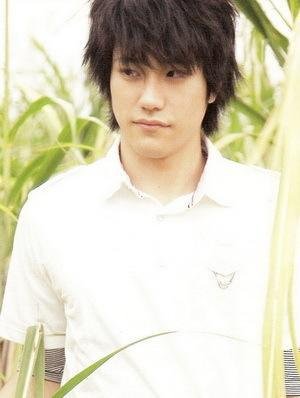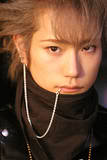In Korean, when you want to address men politely, one would use the word songsaegnim attached to their surname or full name, this literally means teacher.
For example, one would say Yoo Songsaegnim or with the full name Yoo SangHyun Songsaegnim.
It is not possible to a Korean persons first name, such like SangHyun Songsaegnim. For that same reason, when you use the ssi, you cannot say Yoo-ssi, or Yoo SangHyun-ssi, but would rather say SangHyun-ssi.
Addressing Korean women, in Korea women do not take their husbands surname when they get married.
For example if Mrs Han is married to Mr Kim, then she may referred to as Kim songsaengnim-puin (Kim mr-wife), or she maybe reffered to in a similar English terminology such as Misesu Han(Mrs Han).
Using Copula to describe “this is that”
In Korean, if you want to describe A is B , you will have to use special verbs called copula. In Korea, this copula is present at the end of a sentence, and behaves a little differently to ordinary verbs.
If you want to say A is B(like “This is a Korean book”):-
A B-ieyo (or B-eyo)
this Korean book-ieyo
It is obvious that you would use -eyo when B ends in a vowel, but -ieyo when B ends on a consonant.
songsaengnim-ieyo (is teacher)
soju-eyo (is soju)
IMPORTANT to note that in Korean the copula is only used to describe when this “is equivalent to”.
It cant be used to say “is located in”(is underneath”, “is near”) nor can it be used to say “is a certain way” (i.e “is red”, “is happy”).
Describing how things are
Korean possess words which mean “is a certain way”.
Ottaeyo means is how?, as in:
songsaengnim ottaeyo? ( How is teacher ? or What is teacher like? )
saob ottaeyo? (How is business? or What is business like?)
Kuraeyo literally means “it is like that”, and may be used as a statement such as “it’s like that”, “thats right”, “it is”.
On the other hand it may be used as a question Kuraeyo? meaning “is it like that?”, “really?” or “is that so?”.
Korean has a special particle, used in attachment to place emphasis on what is being talked about.
by adding -un or nun, it makes As for Business or As for me.
-nun is attached to a noun, whereas -un is attached to a vowel. EG soju-nun (as for soju), Songsaengnim-un (as for teacher).
More on Grammar
-hamnida and -jiman
In Korean, it is possible to add polite endings to verbs, for example, shillye hamnida (excuse me), which is comprised of the verb stem shille ha-, and the verb ending hamnida (note this is the formal style).
There is also the verb and stem, shillye-jiman (I’m sorry but….) which is a abbreviation of the verb and stem shillye ha-jiman , containing the ending -jiman which means but.
Asking a person
In Korean, there is a special verb which may be used in the event where you want to ask someone if they are someone…..for example “Are you Mr Han”.
We would use -iseyo, and simply add this to the end of a phrase.
Han songsaengnim-iseyo? ( Are you Mr Han?)
Hangungmal songsaengnim-iseyo? (Are you the Korean Teacher?)
Subjects and topics of Korean sentences
In Korean, we attach -i to the end of nouns which end with consonants, or attach -ga to the end of nouns which end in a vowel. By doing this, it is possible to give emphasis, on subjects in sentences.
For example, songsaenim-i ( teacher ) or maekju-ga (beer) give emphasis on each of these subjects in a sentence.
For a sentence , “The man kissed the dog”, the subject in this case would be The man.
On the other hand, when a subject is mentioned for the first time, the subject particle is used, but later on in a conversation, this is switched back to the topic particle.
The topic particle, is similar to that of the english “As for”, and is best used in order to compare two things.
For example, as for me ( na-nun ), I love shopping
as for mum (ma-nun), she hates it.
Using Negative Copula’s
Negative Copula
In Korean, when you are trying to say something is not something else, we use the negative copula anieyo. For instance, When saying ‘A is not B’, we would say :-
cho-nun songsaengnim-i anieyo ( I am not a teacher ).
hanguk hakkwa-ga anieyo ( Not the Korean department ).
Answering questions with Yes and No in Korean
This is a tricky aspect of the Korean language, it is quite different to how we would speak in English.
For example: –
Question in English = “Do you like Korea ?”
Answer in English = “Yes I do like it” or “No i dont”
Answer in Korean = “No, I do like it” or “Yes i dont”
As you can see…it can be confusing at first, so you will need to think carefully.
Where is it?
When asking where something is in Korean, you would say (X-subject) odieyo?
However, it is also possible to say (X-subject) odi issoyo?
When answering a Where is question, you must always use issoyo as a verb such that:-
hakkyo-ga kogi issoyo ( the school is over there ).
Using Korean sentences with but….
We have previously seen that shillye hamnida and the equivalent shillye-jiman mean “Excuse me,but” or “I’m Sorry, but….” .
There are lots of verbs where you may attach -jiman onto, here are a few of them:-
| ka- ( go ) |
|
ka-jiman ( goes, but …….) |
|
| ha- ( do ) |
|
ha-jiman ( does,but……) |
|
| sa- ( buy ) |
|
sa-jiman ( buys,but…..) |
|
| iss- ( is/are, have ) |
|
it-jiman ( has,but….) |
|
| mashi- ( drink ) |
|
mashi-jiman ( drinks,but…..) |
|
| mok- ( eat ) |
|
mok-jiman ( eats, but…….) |
|
| anj- (sit ) |
|
anj-jiman ( sits, but…..) |
|
Note that for the word iss-jiman the double ss is re-written to itjiman
Using polite requests
In Korean, the word chom is used to mean “please”, however do not mistake it to mean the same as the English word for please for all occurances. For instance, when you use chom in a request immediately before the verb at the end of the sentence, it takes on the effect of please.
It is most frequently using in relation to chu- when making requests, for example
Han songsaengnim chom pakkwo-juseyo( Can I speak to Mr Han ), or you might use it in Soju chom chuseyo ( Please give me the Soju ). As you can see, chom may be used to soften up requests by making it more polite.
Numbers and Counting
In Korean there are two sets of numbers which are used when counting, the first set are known as pure Korean numbers, and the other are Sino-korean which is based on the chinese numerals.
The use of these numbers depends on the context in which it is used, for example the pure korean numbers are used when counting hours, and the sino korean when used to count minutes.
| kong |
0 |
|
| il |
1 |
|
shibil |
11 |
|
ishibil |
21 |
| i |
2 |
shibi |
12 |
ishibi |
22 |
| sam |
3 |
shipsam |
13 |
ishipsam |
23 |
| sa |
4 |
shipsa |
14 |
ishipsa |
24 |
| o |
5 |
shibo |
15 |
|
|
| yuk |
6 |
shimnyuk |
16 |
|
|
| ch’il |
7 |
shipch’il |
17 |
|
|
| p’al |
8 |
shipp’al |
18 |
|
|
| ku |
9 |
shibku |
19 |
ishipku |
29 |
| ship |
10 |
iship |
20 |
samship |
30 |
|
|
|
| saship |
40 |
| kuship |
90 |
| paek |
100 |
| ch’on |
1000 |
| man |
10,000 |
Using -seyo
Making requests more polite
The polite honorific -seyo can be used to make requests more polite, -seyo is used when the verb stem ends in in a vowel, and -useyo is used when the verb stem ends in a consonant.
Examples of these are:-
mashi- becomes mashiseyo
ha- becomes haseyo
kidari- becomes kidariseyo
iss- becomes issuseyo
anj- becomes anjuseyo
If you want to request someone to wait for you, you would say kidariseyo (Please wait !!).
The use of -seyo means that you have a special respect for the person, for example if you say hansongsaengnim-i hakkyo-e kaseyo ,you are saying Mr Han is going to school. ( But you are also showing special respect for him ).
What you want to do ?
Koreans use -ko ship’oyo which literally means want to, and this can be added to a verb stem.
For example you may say, cho-nun mok-ko ship’oyo which means I want to eat, notice that when it is used, the -ko is utilised by being added to the end of the verb stem.
Making Suggestions
When making suggestions, Koreans use -(u)pshida ( literally means lets do), as you may have guessed, -pshida is attached onto verb stems ending in a vowel, and -upshida is attached to verbstems ending in a consonant.
Here are some examples:-
Umryosu mashipshida ( Lets have a drink )
Grammar 1 + 2
Grammar 1 이/가 [Lesson Created By KkOmA]
주격 조사. 명사 뒤에 봍어서 주어를 나타내는 조사로는 ‘-께서, -(에)서’ 등이더 있다.
[Subject particle. Particles which come after a noun shows ‘subject’ are: -께서, -(에)서, etc.]
1. “-이” –> 선행 명사가 자음으로 끝날 때
: When the noun ends in a consonant.. add 이
2. “-가” –> 선행 명사가 모음으로 끝날 때
: When the noun ends in a vowel.. add 가
보기~ 1. 책상: 책상 + 이 –> 책상이
2. 사과: 사과 +가 –> 사과가
참고 ‘나, 너, 저, 누구’ 뒤에 붙으면 ‘내가, 네가, 제가, 누가’로 된다.
When 이/가 is attached at the end of ‘나, 너, 저, and 누구,’ the words change into ‘내가, 네가, 제가, and 누가.’
내가 가요. 네가 갔니? 제가 가겠습니다. 누가 갑니까?
예문~ .연필이 있습니다. There is a pencil.
. 안경이 없습니다. There is not a pair of glasses.
. 시계가 비쌉니다. The watch is expensive.
. 딸기가 맛있습니다. The strawberry is delicious.
Grammar 2 을/를
조사. 명사에 붙어서 동사의 ‘목적어’를 나타낸다.
[Object particle. Comes after a noun and shows the “object” of the verb.]
1. “-을” –> 자음으로 끝나는 명사일 때: When the noun ends in a consonant.. add 을
2. “-를” –> 모음으로 끝나는 명사일 때: When the noun ends in a vowel.. add 를
보기~ 1. 책: 책 + 을 –> 책을
2. 교과서: 교과서 + 를 –> 교과서를
참고~ 구어에서는 생략되거나 모음 뒤에서 ‘-ㄹ’만으로 줄여 쓰기도 한다.
[ In spoken language, it may be omitted or abbreviated into ‘-ㄹ’ after a vowel.
영화를 보고 커피를 마셨어요. –> “영활 보고 커필 마셨어요.”
예문~ . 신문을 봅니다. I read a newspaper.
. 커피를 마십니다. I drink a cup of coffee.
. 수영을 합니다. I swim.
. 자우개를 삽니다. I buy an eraser.


Rules:
01. If a character has a romanization with letters separated by an “/”, that is what the letter should be romanized as the final letter when found at the end of a syllable. Example: 밥 (rice) would be bap. 02. When ㅅ is followed directly by ㅣ, it should be romanized as shi. Example: 다시 (again) would be dashi.
03. To avoid confusion of syllables, a hyphen can be used. Example: 후에 (after) would be hu-e.
04. When ㄱ, ㄷ, ㄹ, ㅂ are found directly before vowel, they are romanized as g, d, r, b.
05. When ㄱ, ㄷ, ㄹ, ㅂ are found directly before a consonant, they should be romanized as k, t, r, p.
Grammar 3 + 4
Grammar 3 도 [Lesson Created By KkOmA]
조사. ‘또, 또한, 역시’의 의미를 나타내는 보조사, ‘-에게도, -와/과도’ 처럼 다른 조사 뒤에 붙기도 한다.
[Particle with the meaning of ‘also, too’ May be attached to the end of other particles as in ‘-에게도 and -과도.’] [Similar to ‘also, too’]
보기~
1. 책이 있습니다. + 노트가 있습니다. —–> 책이 있습니다. 노트도 있습니다.
2. 사과를 먹습니다. + 수박을 먹습니다. ——> 사과를 먹습니다. 수박도 먹습니다.
예문~
. 예습을 합니다. 복습도 합니다. [ I prepare the lessons. I go over the lessons, too]
. 책을 읽습니다. 신문도 읽습니다. [ I read a book. I read a newspaper, too]
. 선생님을 만납니다. 친구도 만납니다. [ I meet a teacher. I meet a friend, too]
. 영화가 재미있습니다. 소설책도 재미있습니다. [ The movie is interesting. The novel is interesting, too]
Grammar 4 은/는
조사. 명사나 부사, 다른 조사나 어미에 붙어서 문장의 주제임을 나타내거나 ‘대조’, ‘강조’의 뜻으로 쓴다.
[ Topic particle. Attached to nouns, adverbs, other particles or endings, it shows the subject of the sentence or may be used to show ‘contrast’ or ’emphasis’. ]
1. “은” —-> 자음으로 끝나는 명사일 때: When the noun ends in a consonant, add “은”
2. “는” —-> 모음으로 끝나는 명사일 때: When the noun ends in vowel, add “는”
보기~
1. 물: 물 + 은 —> 물은
2. 우유: 우유 + 는 —> 우유는
예문~
.책이 있습니다. 사전은 없습니다. [ There is a book. There is not a dictionary, though. ]
.넥타이가 쌉니다. 옷은 비쌉니다. [ The tie is cheap. However, the clothes are expensive. ]
.버스가 느립니다. 지하철은 빠릅니다. [ The bus is slow. However, the subway train is fast. ]
.여름이 덥습니다. 겨울은 춥습니다. [ It’s hot in summer. However, it’s cold in winter. ]
Grammar 5 + 6
Grammar 5 에 [Lesson Created By KkOmA]
위치격 조사. 장소나 시간 명사 뒤에 쓴다. ‘위치’나 ‘방향’, ‘때’를 나타낸다.
[Locative particle. Used after place or time noun and shows ‘location, direction or time’.] [ Similar to ‘in/at or to’ ]
보기~
1. 냉장고: 냉장고 + 에 —> 냉장고에 [위치: place]
2. 아침: 아침 + 에 —> 아침에 [때: time]
3. 도서관: 도서관 + 에 —> 도서관에 [방향: direction]
예문~
. 가족이 교회에 있어요. My family is at church.
. 우유가 가게에 있어요. Milk is in the shop.
. 밤에 착을 읽어요. I read a book at night.
. 지금 은행에 가요. I go to the bank now.
Grammar 6 에
셈을 세는 단위 명사와 결합하여 단위나 셈의 ‘기준’을 나타낸다.
[Added to the unit noun which counts numbers, it shows the ‘standard’ of the counting or unit.] [Similar to ‘a, per, or by’]
보기~
1. 한 그롯 — 이천 원입니다. —–> 한 그롯을 이천 원입니다.
2. 만 원 — 여섯 개입니다. —–> 만 원에 여섯 개입니다.
예문~
. 일 주일에 두 번 갑니다. I go twice a week.
. 한 시간에 20페이지를 읽습니다. I read 20 pages per hour.
. 옷 한 벌에 4만원입니다. It costs 40,000 won by the set.
. 한 반에 10명입니다. There are 10 students in a class.
Family Members
Relative Titles – 친척과 관계된 호칭
Older Woman – 아주머니 – ajumni (aunt) [Polite]
Older Woman – 아줌마 – ajumma (auntie) [Less Polite]
Older Man – 아저씨 – ajussi (Uncle)
Elderly Woman – 할머니 – hal muh ni (Grandmother) [Polite]
Elderly Man – 할아버지 – hara buh ji (Grandpa) [Less Polite]
Father – 아버지 – ah buh ji
Father in law – 시아버지 – shi ah buh ji
Father in law – 장인어른 – jang in uh reun
Dad – 아빠 – appa [Informal]
Mum – 엄마 – umma
Mother – 어머니 – uh muh ni
Mother in law – 시어머니 – shi uh muh ni
Mother in law – 장모님 – jang mo nim
Siblings – 손위 형제 자매
Older Sister – 언니 – unni (If the speaker is female)
Older Brother – 오빠 – oppa (If the speaker is female)
Older Sister – 누나 – nuna (If the speaker is male)
Older Brother – 형 – hyung (If the speaker is male)
Younger Sibling – 동생 – dong saeng (Regardless of speaker’s gender)
Lesson Created By KkOmA
http://learn-korean.net/
|









 i siang tadi, pimpinan KPK sempat berniat menyerahkan rekaman hasil sadapan yang masuk ke ponsel Ketua KPK Antasari Azhar. Rekaman sadapan itu sedianya diserahkan bersamaan dengan penyerahan rekaman tentang dugaan rekayasa kriminalisasi Wakil Ketua KPK Bibit Samad Rianto dan Chandra M Hamzah.
i siang tadi, pimpinan KPK sempat berniat menyerahkan rekaman hasil sadapan yang masuk ke ponsel Ketua KPK Antasari Azhar. Rekaman sadapan itu sedianya diserahkan bersamaan dengan penyerahan rekaman tentang dugaan rekayasa kriminalisasi Wakil Ketua KPK Bibit Samad Rianto dan Chandra M Hamzah.








